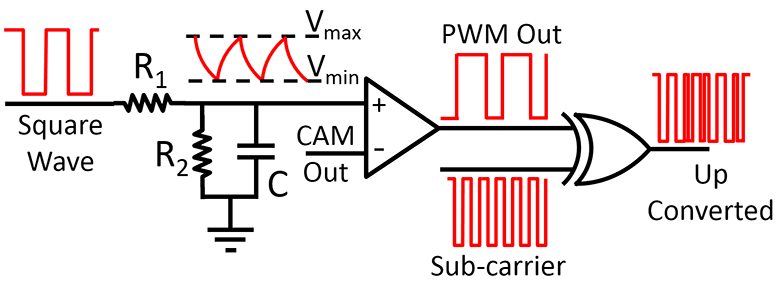Man
Professional
- Messages
- 3,222
- Reaction score
- 988
- Points
- 113

ASIC of a wireless HD video camera. Photo: University of Washington
Backscattering is a physical phenomenon in which waves, particles, or signals are reflected in the opposite direction, that is, towards the source. It is traditionally used in astronomy, photography, and ultrasound. But it turns out that this phenomenon can be used for electronics, sensors, and radio transmitters. The University of Washington’s Sensor Systems Lab
hasdeveloped an HD video module that transmits 720p and 1080p video streams at 60 FPS with power consumption of 321 and 806 μW, respectively. This is 1,000–10,000 times less than that of existing wireless cameras. In other words, the module will have enough energy extracted from the environment (WiFi, light, vibration, temperature differences, microwave radiation, etc.). This was achieved by eliminating “extra” electronics from the device, including the ADC and video encoder. The signal from the sensor is transmitted in analog form via a backscatter pulse width modulator.
Imagine we have a wireless video camera, such as a surveillance camera, smart glasses or another gadget from the Internet of Things. In short, a wireless video camera works as follows:
- photons enter the photodiodes of the light-sensitive matrix, which convert the light into an electric charge;
- Low Noise Amplifier (LNA) amplifies the signal;
- the Automatic Gain Control (AGC) module verifies that the resulting signal does not exceed the range processed by the analog-to-digital converter (ADC);
- The ADC performs sampling and converts analog voltage surges into digital form;
- A video encoder compresses a digital video signal;
- The radio transmitter transmits a digital video signal to the base.
The lion's share of energy consumption in such a gadget falls not on the photosensitive sensor, but on the rest of the electronics. It has been proven that the 128x128 sensor itself can operate on only 1.2 microwatts.
So, engineers from the sensor systems laboratory, in order to reduce energy consumption, moved the ADC along with other electronic components outside the module.

Circuit diagram of a conventional video camera with a digital signal transmitter

Circuit diagram of a video camera with an analog signal transmitter via backscattering, where the rest of the electronics are moved outside the module
As we can see, the low-noise amplifier (LNA), automatic control module (AGC), analog-to-digital converter (ADC) and video encoder have been moved from the mobile part to the receiver side. Instead of a conventional radio transmitter, a pulse-width modulator (PWM) with backscattering is used.

Circuit diagram of a pulse-width modulator with backscattering
Interestingly, the PWM also performs compression of the analog signal in the reference frames. The idea is that the values of adjacent pixels differ little from each other. Therefore, instead of the usual line-by-line scanning of the matrix, a zigzag scanning was implemented here, when even lines are scanned from left to right, and odd lines from right to left. Experiments have shown that this allows to reduce the radio transmission bandwidth.
The table shows the bandwidth for video transmission with a peak signal-to-noise ratio on the receiver side of more than 30 dB (the average and worst results are given based on the results of a hundred experiments for each scenario).

The transmission quality, that is, the Effective Number of Bits (ENOB) indicator, depends on the distance between the video camera and the signal receiver. The diagram shows the results of a lab experiment at a distance of 4 to 16 feet (1.22 to 4.88 m). As an example, a comparison of frame quality with different losses is also given (ENOB from 3 to 7 bits).

The sensor systems lab has long been experimenting with backscattering in various chips. Previously, they developed an open source platform WISP (Wireless Identification and Sensing Platform). These are EPC Class 1 Generation 2 RFID sensors on an open source platform with a programmable 16-bit controller that is compatible with various sensors. It transmits data through a high-frequency UHF RFID scanner and receives energy from it, that is, it does not need batteries at all. Unlike conventional RFID, on the WISP platform, radio tags are programmed to execute arbitrary computer programs.

WISP platform
Miniature devices consume almost no energy, so they are ideal for monitoring systems, CCTV cameras, wearable gadgets, etc. In general, the use of backscattering in electronics may lead to many mobile devices getting rid of batteries in the future. You can read more about “passive WiFi” in scientific articles previously published by specialists from the University of Washington:
- Wi-Fi Backscatter: Internet Connectivity for RF-Powered Devices
- Passive Wi-Fi: Bringing Low Power to Wi-Fi Transmissions
Source
